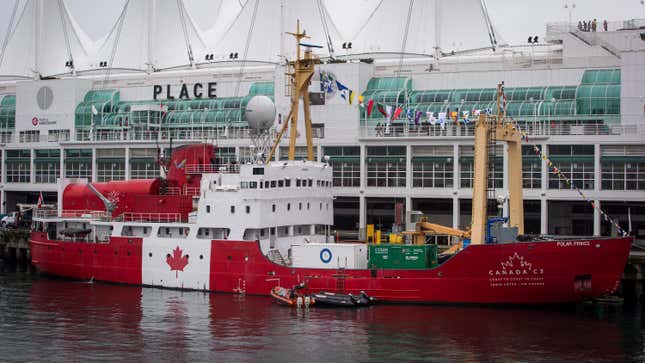
A submersible with 96 hours of oxygen supply went missing on Sunday as it made its way to the Atlantic Ocean floor to the wreckage of the Titanic. A search effort to find the submersible, named Titan, has been underway since, including the Canadian military and U.S. Coast Guard. On Tuesday, the Financial Times said that the Royal Canadian Air Force would send a plane able to detect subs underwater to aid in the search. Rescuers are searching in an area hundreds of miles off the coast of Newfoundland.
From the FT:
The US Coast Guard’s Boston-based North East service said on Monday evening that a Royal Canadian Air Force aircraft able to detect underwater objects, a CP-140 Aurora, would join the search on Tuesday morning. That was to follow surface searches of the sea carried out by C-130 Hercules aircraft overnight.
[...]
The Canadian Aurora aircraft is intended for anti-submarine warfare, meaning it can detect underwater objects from the air.
Most of the aircraft and vessels initially deployed in the search are limited to conducting searches of the surface, in case the submersible has returned to the surface away from the vessel that launched it. They are also equipped with sonar equipment to listen for any sounds produced.
The Associated Press identified four of the five on board, including a Pakistani businessman named Shahzada Dawood and his son Suleman, a British businessman named Hamish Harding, and a French explorer named Paul-Henry Nargeolet. The fifth is reportedly Stockton Rush, the founder of OceanGate, the private company that operates the Titan.
The New York Times said Tuesday that any recovery of the Titan will be met with steep challenges, assuming it’s found at all.
Even if the Titan can be located — in a remote patch of ocean where the seafloor lies more than two miles below the choppy surface — retrieving it will not be easy. That is partly because even the best divers cannot safely go more than a few hundred feet below the surface.
To recover objects off the seafloor, the U.S. Navy uses a remote-operated vehicle that can reach depths of 20,000 feet. But ships that carry such a vehicle normally move no faster than about 20 miles per hour and the Titanic wreck lies about 370 miles off the coast of Newfoundland, Canada.